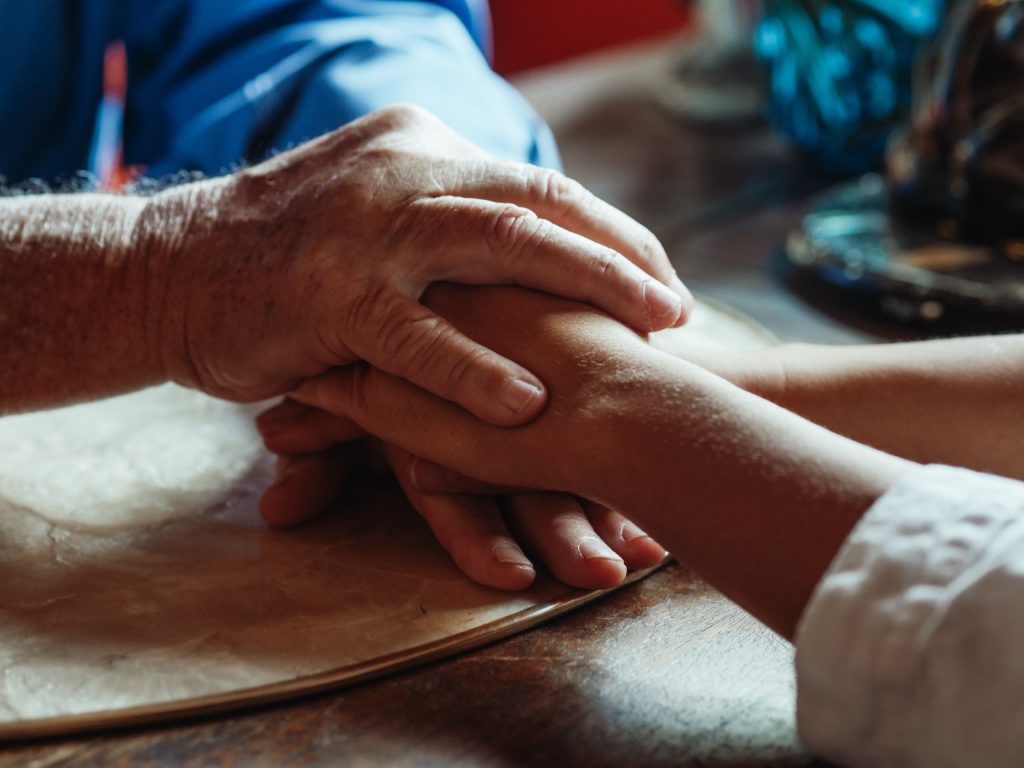
St. Ann’s Memory Care Unit Continues to Combat COVID

While much has been written, said, and postulated about Covid and its impact, we find that science, popular opinion, and fear continue to clash. At St. Ann’s we approach the subject from a different tact: one akin to a short story—an allegory—that may cast a different light on this pandemic and our role in its outcome.
Beginning as many stories do, with “once upon a time,” we learn a “mysterious entity” caused a relatively unknown virus to appear on Earth. This mysterious entity was hatching an ingenious plan to invade our planet to plunder its riches and saw us as a nuisance. It devised a simple, but devious, way to attack.
The villain in this fiction designed a novel and highly virulent agent instead of “customary alien weapons” like photon torpedoes or lasers. Its weapon was a piece of genetic code capable of copying itself at the expense of the host cell, leading to illness or death.
Instead of playing out any further this science fiction-like plot, our tale turns to the science of Covid.
At its core, it is much akin to what we know as a “typical” virus, but in this case, it is significantly more transmissible and infectious. It is shared via droplets and/or minuscule aerosolized particles.
It is composed of messenger ribonucleic acid (mRNA) wrapped in an envelope of protein and fat whose surface contains projections called receptors that attach to the respiratory tract lining of the host. This enables the virus to gain stealthy access to our cells before our immune system detects it, much like a Trojan Horse. (If this were the hidden secret in the plot of our novel, the dark entity, and its virus would lead to the ultimate demise of most life forms on Earth.)
However, we are using an allegory, and in fact, know much about Covid.
Woefully, it preys first on the most vulnerable amongst us. The elderly, the infirm, diabetics, those with heart disease, cancer, the immunodeficient (i.e., people on transplant medications and steroids among others), and the obese are at the highest risk for serious complications and death.
Consequently, the first and hardest hit in our society were the elderly, especially those living in nursing facilities, including those with dementia. From what’s known, dementia does not increase the risk for COVID-19 complications, just as dementia does not increase the risk of seasonal influenza.
However, dementia-related behaviors, advanced age, and common health conditions that often accompany dementia may increase the risk of getting Covid.
For example, people with dementia may forget to wash their hands or to follow recommendations to prevent illness, including social distancing, wearing masks, and taking medications. Diseases such as COVID-19 and the flu may also worsen the cognitive impairment of dementia.
As communities and healthcare services continue to reopen this summer, it is imperative that caregivers consider risks and take additional safety measures to protect those living with dementia. These precautions include:
- Following CDC guidelines
- Encouraging vaccinations
- Educating families and staff
- Posting signage to help remind people with dementia to wash their hands and correctly use alcohol-based hand sanitizer
It’s important that we remain diligent. As providers and relatives, we must think ahead and make alternative plans should adult daycare, respite, or similar services be modified or canceled due to a resurgence of COVID-19. 
We—in healthcare and beyond—must think even further ahead and must plan for alternative care management of the elderly, should the need arise. We made huge strides in telemedicine, but we must not stop there.
People living in long-term care facilities still remain vulnerable to COVID-19, due to the communal nature of these settings, and because the elderly often have underlying conditions that put them at higher risk.
According to some estimates, 34% of all U.S. COVID-19 deaths were among long-term care community residents or staff. Given the ongoing risk of COVID-19 transmission, visitors are still encouraged to make appropriate considerations and to follow all safety precautions when visiting their loved ones.
St. Ann’s Nursing Unit (where I serve as Medical Director alongside the administrators, ancillary staff, and other providers) includes a Memory Care Unit whose staff are well aware of these risks. They continually strive to meet or exceed all safety measures, with the goal of protecting the continued wellbeing of all residents. St. Ann’s has a proven positive track record, as seen through the organization’s quality ratings and in meeting strict federal and state guidelines and directives.
While things are looking up due to vaccinations and developments in care, we mustn’t let our guard down yet. We need to look to and trust vaccines as our way out of this pandemic.
Scientists from around the globe created a non-infectious, virus-like agent made up of mRNA, embedded in a fat envelope with receptors to adhere to the body’s respiratory lining, to mimic COVID-19 and induce an immune response to it.
This mRNA only serves one purpose, with incredible benefits to our body’s ability to fight off Covid.
The mRNA codes for proteins to identify COVID-19 and tag them as foreign, and does not in any way interact with our DNA/ genetic material. It is removed by the host cell in about three hours.
The vaccines we have today are extraordinarily effective and safe in neutralizing COVID-19 and are some of the safest vaccines ever developed.
However, disinformation threatens to stain the legacy of these incredible vaccine developments.
We continue to see that human nature, misplaced fears, and unproven distrust of vaccines and the scientific method may be our Achilles Heel in our battle against Covid.
People promoting hoaxes, conspiracies, and sewing disinformation into our public discourse are counteracting the progress we’ve made as a society.
These behaviors not only delay herd immunity but also contribute to the emergence of COVID-19 variants that are more infectious and resistant to current vaccines.
We conclude by returning to our allegory and understanding that we are together crafting this tale. We have the ability to positively shape its ending, so let’s move forward with diligence, education, and positive action.
Sal F. Dyke, M.D.; MS; Fellow, AAF P
St. Ann’s Medical Director

